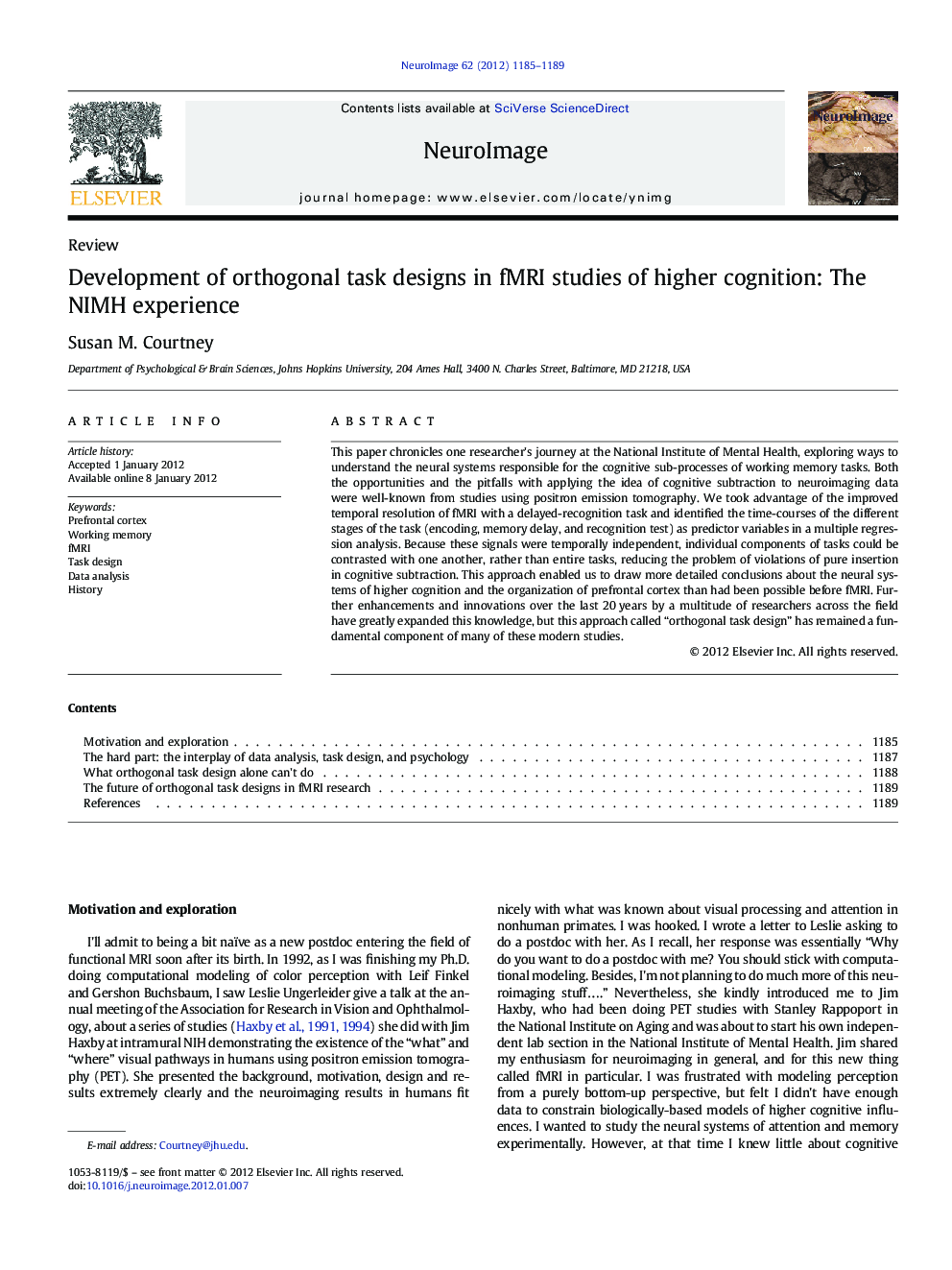| Article ID | Journal | Published Year | Pages | File Type |
|---|---|---|---|---|
| 6031774 | NeuroImage | 2012 | 5 Pages |
This paper chronicles one researcher's journey at the National Institute of Mental Health, exploring ways to understand the neural systems responsible for the cognitive sub-processes of working memory tasks. Both the opportunities and the pitfalls with applying the idea of cognitive subtraction to neuroimaging data were well-known from studies using positron emission tomography. We took advantage of the improved temporal resolution of fMRI with a delayed-recognition task and identified the time-courses of the different stages of the task (encoding, memory delay, and recognition test) as predictor variables in a multiple regression analysis. Because these signals were temporally independent, individual components of tasks could be contrasted with one another, rather than entire tasks, reducing the problem of violations of pure insertion in cognitive subtraction. This approach enabled us to draw more detailed conclusions about the neural systems of higher cognition and the organization of prefrontal cortex than had been possible before fMRI. Further enhancements and innovations over the last 20Â years by a multitude of researchers across the field have greatly expanded this knowledge, but this approach called “orthogonal task design” has remained a fundamental component of many of these modern studies.
